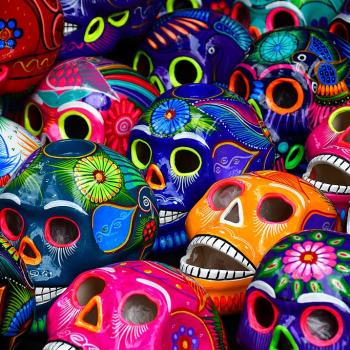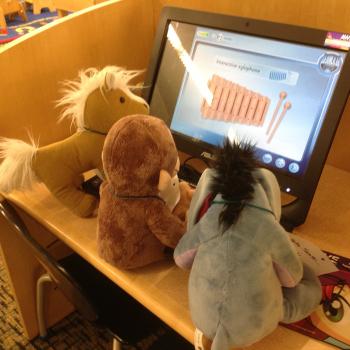NB: This post is cross-posted at my substack, where most of my less-official and more-experimental or more-fun writing is nowadays. You might subscribe!
Creatures, a few weeks ago I watched Killers of the Flower Moon, a Scorsese flick about the 1920s wave of murderous violence unleashed by white men greedy for the oil wealth of the Osage Indians. If that sounds like an unexpected subject for a Scorsese flick, that’s one of the movie’s strengths: the moment when you realize that this story is perfect for this director. Not the one-man-alone Scorsese of Taxi Driver or Raging Bull or Bringing Out the Dead, not actually the period Scorsese of Age of Innocence, but the Scorsese of Goodfellas and Casino and The Irishman. It’s a riff on two genres: the Western, sure, a little bit, but mostly the mafia movie. The mob flick, but for lynch mobs; the roaring twenties, but the roar is your Black neighbors’ houses in flames.
[I’m going to talk about a bunch of specific choices here, including the final image; I’m very grateful I didn’t know what that image would be in advance, so if you also prefer this kind of swerve and surprise, skip this post until you’ve seen the film.]
As I was watching the film, I could feel myself deciding to like choices that I could have decided to dislike. The prowling camera inside the central couple’s home, trapped amid fine material goods; the pained grimace that is Leonardo DiCaprio’s only expression throughout this entire movie. There’s a stagey quality to parts of this film, even before the sudden swerve into metatheater at the end. It all worked for me, partly for mysterious reasons of movie chemistry but maybe partly because these choices were made to entertain: a word that could sound like criticism, it could sound like I’m calling Scorsese exploitative or the audience ghoulish, but I basically mean that the emotions resonate. Glee, shock, suspense, fear, hope, sorrow.
There’s an extended introduction that includes scenes of Jazz Age Indian wealth—scenes I haven’t seen in any other movie before. It’s exciting! Osage limos, Osage flappers, Osage pilots in their dashing new two-seater planes. I’m obviously having my emotions during this scene as a white viewer, but I think a thing the film does, why its keen attention to what your emotions are doing is interesting, is keep those emotions tightly bound to the Osage people. Scorsese knows how to make you feel certain things in a way that will keep you watching—these are the skills of the entertainer. And he’s using them, here, to keep you emotionally in an Osage viewpoint even though the actual narrative, the events you see and the way you learn what’s happening, follows the white people.
The two main white folks are somewhat blank: Robert De Niro is a pure villain, radix malorum est This Guy. DiCaprio plays Ernest Burkhart, a returning WWI veteran who marries an Osage woman, Mollie Kyle (Lily Gladstone)—but unlike the other white men courting Osage oil belles, he’s marrying for love. He thinks he’s marrying for love. He closes all the doors between his heart and his conscience, so he can believe that when he reaches toward his wife, what he’s doing can still bear the name of love. No matter what I do to you, I love you—even Ernest must know that that’s never true.
Killers rises toward genre horror, and the horror comes from the intimacy of the violence being committed against the Osage. Everyone who’s murdering them says, “I am your friend. I love you. Look at all I’ve done for you!” Everyone who’s murdering them seems to believe it, too.
Mollie’s a terrific character. She’s wry—I know this is one of those words I overuse, like “desultory,” but this time I’m right! She’s wry and tough, she’s worldly-wise, she’s wealthy and she knows, or thinks she knows, that her wealth is a target painted on her chest. The thing is that she knows she’s smart and tough and clear-eyed. People who know that they are smart are susceptible to believing that all their judgment calls are the smart ones. People who know they’re cynical about human nature can be conned if you convince them that only somebody as worldly-wise as them would see that you’re on the level. It’s like that Sartre riff, which I can’t remember where I read it—somewhere in the old blogosphere days—Hell is other people: but not you (you’re different). Mollie knows her strengths, and that leads her to underestimate her vulnerability. And yet in the end it’s her strength of will that brings an end to the killing.
And it’s also the FBI. Scorsese trusts his audience on this, I think. He does not go into the blank unholy Hoover of it all: the part where the FBI comes to Osage country in order to strengthen their own power. The radio-show bit at the end is a bravura scene, shocking and full of devastating comedy, and one of the things it’s doing is lampshading the heroic role this narrative gives the FBI. Next week on the King Arthur Flour Hour: our G-men tackle the degenerate subversive, Doctor King! Scorsese doesn’t say that, which is good, he absolutely should not have, but he does show you how this story might become that one.
Killers made me think of a couple ways the Western and the gangster film intertwine. The Western is about violence and lawlessness, which are glamorous and lucrative, and available to people of every race: That’s the Fugees in “Cowboys” taking on the personae of Drug War criminals, taunting, “Yo, this was how the West was won!” The Western is about violence and lawlessness, which are forms of freedom: That’s the men interviewed for The Act of Killing, who butchered fellow Indonesians accused of Communism, and who call themselves “premen,” which is the English, free men.
But then the thing that makes Killers feel most like a Western is that one of the classic Western forms is “the tragic institution of order.” Here, we do end with a scene of order: the circle dance. It isn’t a tragic new institution, but a restoration. Whatever role lawmen played in making it possible, it isn’t the kind of order lawmen bring.
White beach moonflower photographed by Sabina Bajracharya, found via Wikimedia Commons and used under a Creative Commons license.











